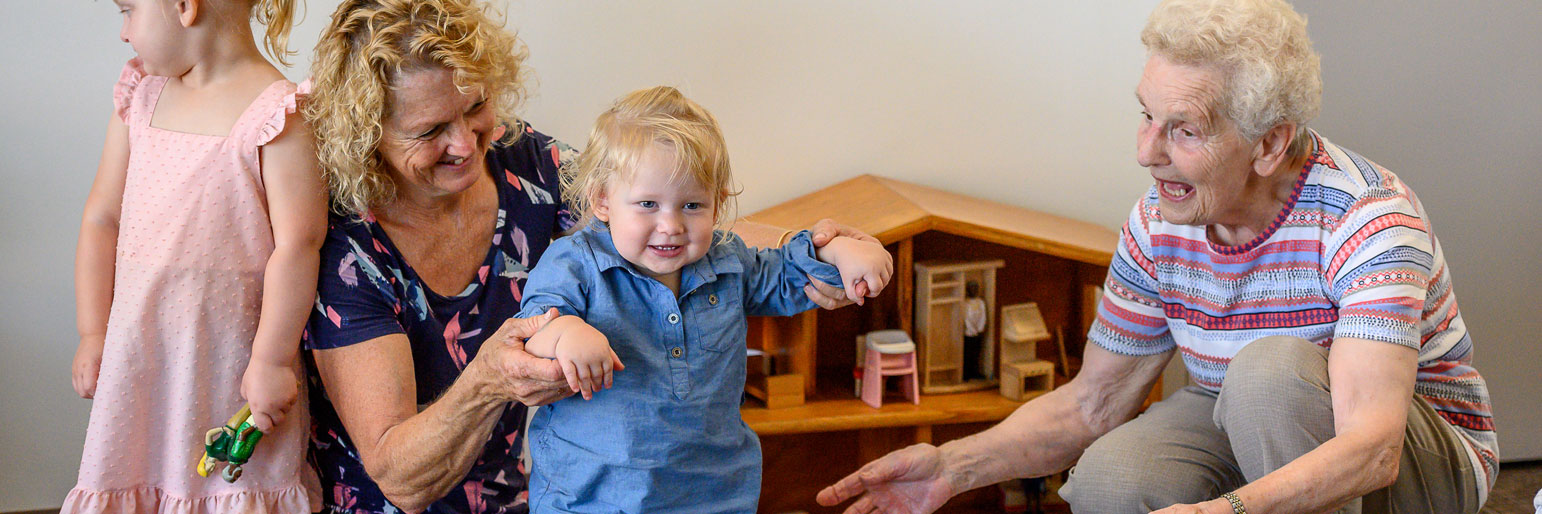My family
Belonging together
Children feel secure and learn well when they feel loved and part of a family.

Activity
Ask families to draw a picture, do a painting or make a collage of their family or perhaps decorate a frame for a family photo.
What you'll need
- Paper
- Coloured paper
- Scissors
- Pencils/textas
- Glue
- Collage materials
- Tape
- Family photos
- Cardboard
Words to use
- Family, mother/father, mum/dad, brother/sister, grandma/grandpa, nanna/poppa, uncle/aunt, cousin
- Little/big, older/younger, tallest/smallest
- Home/house, live, together, belong
Questions to discuss
- Who is in your family?
- What are their names?
- How old are they?
- Do they go to school?
- Where do you live?
- Do you have any pets?
- Who lives in your house with you?
- Does your family speak another language at home?
- How does your family say hello/goodbye?
Learning through play
Ways to develop numeracy through play
- Ask children to count how many people are in their family.
- Talk about sizes – who is the tallest/shortest person in your family?
- Talk about ages – how old are the people in your family? Who is the oldest/youngest?
- Group family members into uncles/aunts/cousins, children/adults.
- Plot on a map where each family lives/comes from.
Ways to develop literacy through play
- Ask children to tell you who is in their family.
- Use nouns such as relatives, cousins, grandparents, sister and brother.
- Read books about families eg Titch by Pat Hutchins, Love makes a Family by Sophie Beer.
- If drawing or collaging a family picture, talk about the different attributes (hair, eye colour etc) of the people in your family.
- Ask families questions like:
- What do the members of your family do? Do they go to school, university, work?
- Do they all live in Australia?
- Do they speak the same languages?
- Talk about names for people indifferent languages eg Oma/Opa (grandparents in German).
Extensions and variations to this activity
- Use a cardboard house shape or people shapes to create a collage on.
- Plot on a map which country each family comes from, this may also be different regions within South Australia/Australia.
- Make a family tree.
- Make paper doll chains.
- Dramatic family play using:
- dolls house and families
- blocks and people
- home corner.
- Stamping with people shapes.
- Make some people biscuits using gingerbread man cutters.
- Read Goldilocks and the Three Bears – talk about Mumma bear, Papa bear and baby bear (this story also has lots of numeracy opportunities to talk about numbers and sizes).
- Make a belonging tree with photos of all the playgroup families.
- Make a photo book of people in your family.
- What are the interests/likes/dislikes of people in your family?
Supporting parent engagement in play
Parents or carers can:
- Comment on what their children are doing (say what you see).
- Talk in their home language.
- Use literacy and numeracy words (see words to use section above).
- Read books about families to their child.
- Look at photos of their family and talk about where they were taken/what they were doing.
You can help families by:
- Modelling what you want them to do.
- Talking to them about the focus of the activity and what children might be learning.
- Writing up words that go with the activity.
- Making suggestions on what families can do at home.
Related Great Start activities
Great Start activities are for parents and carers to do with their children.


